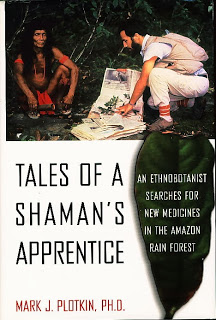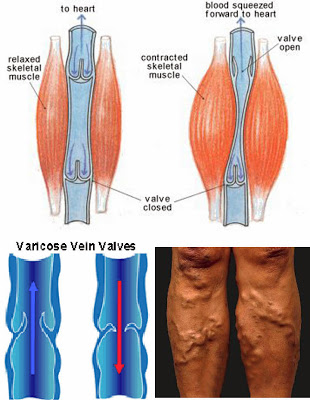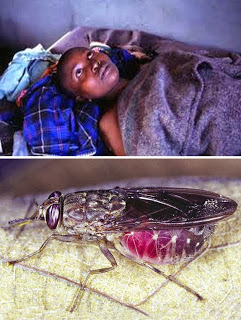Biology
Biology concepts ? ethnobotany, pathophysiology of diseases, zombies?
Are there movies made these days that don?t have zombies in them? How did I miss the zombie aspect when I studied Lincoln and the Civil War? University classes have been developed to discuss the social implications of zombie life and why they have become so prevalent in our media.
As a biologist, the undead zombie troubles me for several reasons. No heartbeat, little brain activity ? just what is moving them and how do they digest the brains they eat? I know that some sites have very intricate back stories as to how they stay upright and mobile, but they don?t hold water scientifically.
Current estimates are that nearly 200,000 people are infected with T. brucei, although new cases are dropping significantly ? yea. This a significant disease that requires diligent public health measures to keep the number of flies under control and to protect the population from the flies. It was once thought that humans had to move into the woodland to meet up with the tsetse flies, but new studies show that the flies do enter buildings.
Boland TA, McGuone D, Jindal J, Rocha M, Cumming M, Rupprecht CE, Barbosa TF, de Novaes Oliveira R, Chu CJ, Cole AJ, Kotait I, Kuzmina NA, Yager PA, Kuzmin IV, Hedley-Whyte ET, Brown CM, & Rosenthal ES (2013). Phylogenetic and epidemiologic evidence of multi-year incubation in human rabies. Annals of neurology PMID: 24038455
Vale GA, Hargrove JW, Chamisa A, Hall DR, Mangwiro C, & Torr SJ (2013). Factors affecting the propensity of tsetse flies to enter houses and attack humans inside: increased risk of sleeping sickness in warmer climates. PLoS neglected tropical diseases, 7 (4) PMID: 23638209
Veyseller B, Aksoy F, Yildirim YS, Açikalin RM, Gürbüz D, & Ozturan O (2012). Olfactory dysfunction and olfactory bulb volume reduction in patients with leprosy. Indian journal of otolaryngology and head and neck surgery : official publication of the Association of Otolaryngologists of India, 64 (3), 261-5 PMID: 23998032
- Human Health And Infectious Diseases
Health is a state of complete physical, mental & social well-being. Health is affected by genetic disorders, Infections, change in life style (food, water, rest, exercise, habits etc).Diseases may be Infectious or Non-infectious. Pathogens: Disease...
- Heart, Blood & Blood Vessels- Facts
The human body has approximately 37,000 miles of capillaries.The aorta, which is largest artery located in the body, is about the diameter of a garden hose.Women hearts beat faster than men.Three years after a person quits smoking, there chance of having...
- Blood --- Not Just For Vampires Anymore
?Nosferatu? was the first film (1922, directed by F.W. Murnau) made about the blood sucking undead. It followed the Stoker novel so closely that his estate sued and a court ordered all the copies destroyed. Only five survived, and were used to restore...
- Free Will Ain?t Free
Biology concepts ? neural parasitology, domoic acid toxicity Zombies don?t have a choice in how they behave. Free will is a thing of the past; they don?t even have the ability to resist a dance routine with Michael Jackson. Michael seems awfully...
- The Living Dead - Living Or Dead?
Biology concepts ? characteristics of life, cell theory, reproduction, homeostasis, evolution How could this monster have come from the Walking Dead TV show? In what way is he/she walking, and while she is in dire need of a makeover, can you ...
Biology
Post of the Living Dead
Biology concepts ? ethnobotany, pathophysiology of diseases, zombies?
 |
| You know you have a phenomenon when you can knit a zombie. These you can take apart and reassemble, just like real zombies. Knitting a zombie somehow weakens the argument that we use them to address our deep seeded fears; these might show up at a baby shower. |
Some ?experts? believe that zombies hold fascination for us because of our need to address fears without directly confronting them. Death, the breakdown of social order, chaos, perhaps science run amok ? these are all found in the zombie stories.
In fact, it could be proposed that all these fears stem from the need for expected outcomes and a sense of finality. After you die, who cares about control, order, or even diet ? but what if you were condemned to be undead? What if everyone else was undead and you had to deal with their lack of finality? We watch zombie movies to deal with our own fears on a subconscious level.
Did you know that zombie legends may have some basis in truth? In the early 1980?s an ethnobotanistfrom Harvard named Wade Davis claimed to have found two potions used to create zombies.
In Haiti, the fear of zombies has been present for many years. Based in African folklore and maintained by the descendents of slaves that revolted and remained in Haiti, witch doctors (bokurs) are very real sources of reverence and fear for the average man and woman. Just how the bokors managed to create zombies was the question asked by Dr. Davis.
 |
| Ethnobotanists are scientists that study different civilizations (ethno-) for how they use plants (-botanist) in medicine and culture. Mark Plotkin spent years with tribes in the Amazon studying the use plants by the medicine men. After returning with many plants from which to extract compounds, Plotkin started Shaman Pharmaceuticals to test the compounds for medicinal uses. Plotkin now runs an Amazon Preservation organization. |
Davis claimed to have found a powdered potion that could make a person appear to be dead. Based on a toxin called tetrodotoxin, Davis said the powders were most commonly blown into the faces of victims and the toxin would inhibit firing of voltage-gated channels in the nerves. Heart rates would go to near zero and the affected individuals would seem dead.
In many cases, tetrodotoxin doesn?t just make people appear dead, it kills them for real. Blue ringed octopods, several species of fish, and other animals contain this toxin and it will mostly certainly kill. The sushi dish called fugu is a pufferfish that contains tetrodotoxin. Even when prepared correctly (which takes a government issued license), the consumer will experience numbness in their tongue and mouth. Davis stated that dosing the victim often resulted in real death; making zombies is apparently not so easy.
After a hasty burial, the bokor would dig up the poisoned victim before true death occurred, and a zombie slave was produced by giving a second potion. This poison was based on a Jimson weed (Datura stramonium) extract, leading to the second name for the plant, zombie cucumber.
Jimson weed extract is a psychoactive agent that leads to stupor and amnesia, but no loss of consciousness. There said to be the basis of the loss of free will, and slow dragging movements of zombies. In such a state, the affected could be turned into slave labor, or used to frighten others into compliance with the bokurs? wishes.
Davis? samples and explanations were not accepted by the majority of the scientific community. The toxins described are very toxic; small mistakes in dosage would most certainly be fatal. And a motive of creating cheap labor is not convincing; most labor in Haiti is cheap.
But don?t try to tell that to the Haitians. They actually have a law forbidding the creation of zombies. Article 249 of the code of laws states, ?It shall also be qualified as attempted murder the employment which may be made against any person of substances which, without causing actual death, produce a lethargic coma more or less prolonged.? Scary.
So let?s talk zombies. Some people will get into intricate detail, but let?s confine ourselves to two kinds of zombies. One kind of zombie was dead but is now reanimated by some means ? usually some kind of parasite or virus that brings some tissue back to life. The other sort of zombie always remains living, but loses all ability to direct its own thoughts and actions; it is driven only to acquire flesh ? usually bbrraains!
 |
| The top cartoon shows how the valves in your veins work to keep blood from pooling in the lower extremities. For veins above your heart, you don?t need the valves, so they don?t have them. On the bottom, you can see what happens in the case of varicose veins, when blood will begin to pool. The picture on the bottom right shows what happens when valves go bad (insufficiency). Can you get varicose veins above your heart ? yes, but it usually requires severe liver damage. |
If they have no heartbeat, how do they circulate their blood? I saw one website that stated unequivocally that muscle movement (contractions and relaxation) pushes the blood around the body. Ridiculous, right? Not really. You do this every minute of every day. On the artery side of our circulation, the muscle in our vessels work with the contraction of the heart to push the blood along, but across the capillary bed, there is little pressure left to push blood through the veins.
So you use the action of your large muscle groups to squeeze the blood in the veins. When you walk, bicycle, or step dance, the contractions push the blood up against gravity. Your veins have one-way valves, so after the blood passes a valve, it won?t flow backwards. If this wasn?t so, all your blood would end up in your feet, and you?d have to buy shoes like Shaquille O?Neal?s.
On the other hand, if we are talking about living dead zombies, then there are many possible biologic causes. Rabies is caused by a bacteria passed through the bite of an infected animal. The result is an infection that can take one of two forms. In furious rabies, the victim will display erratic behavior, aggressiveness, foaming at the mouth, and will eventually start biting people.
The paralytic form of rabies will cause slow movements, dragging feet, lack of coherent behavior, and foaming at the mouth. The foaming is due to the inflammation of the throat that makes it so painful to swallow that victims will choose to drool and foam instead. Either form of rabies could mimic what we think of as zombies.
 |
| The top picture is Cujo, from the Stephen King story of the same name. The dog was huge, and then caught rabies from a little field animal. He lost all sense of personal hygiene and liked to bite anything that moved ? just like zombies. Below is a photomicrograph of the negri (named for Adelchi Negri) bodies that appear in the brain tissue of rabies victims. They stain darkly and are made up of riboproteins made by the rabies virus. |
Most people believe that you get bit, and then you develop rabies, so it is easy to put cause with effect. But a new study shows that rabies can incubate for decades before symptoms manifest. The man in question showed signs while he lived in the U.S., but the organism he harbored is found only in Brazil, a place he hadn?t lived or visited for many years, although he did remember a biting incident in his home country. If the symptoms occur out of nowhere, does that support or negate the idea that he might be a zombie?
If you want an example of living dead, look no further than African sleeping sickness (also called trypanosomiasis). The bite of the tsetse fly transmits the Trypanosoma brucei parasite, which then takes up residence in brain.
The symptoms get progressively worse, starting with headaches and moving through slurred speech and then to a zombie like state with sleep being impossible at night and staying awake being difficult during the day. They enter a living nightmare, unable to respond or act, until they fall into a coma and die after a few weeks. Sounds like a zombie to me.
 |
| African sleeping sickness is an often fatal disease with parasites invading the brain and doing damage. Survivors are usually permanently brain damaged. The tsetse fly (below) is the vector that carries the trypanosome. While it takes a blood meal, it vomits the organisms into the wound |
Recently, a study showed that things thought to be repellent to tsetse flies, such as smoke or human presence in a confined space, did not stop the flies from alighting on humans inside buildings. The number of landings also increased as the temperature increased. Buildings must now be considered a possible venue for disease transmission. But at least with this disease you can just go to sleep, it isn?t like your ear will fall off.
Leprosy (Hansen?s disease), on the other hand, can present some of the bizarre symptoms seen in zombies. The causative organism is Mycobacterium leporae, and has been around for thousands of years. There was no treatment for most of those years; an effective antibiotic regimen was not devise until the 1940?s. Because of this, leper colonies were used for two thousand years to separate the victims from the rest of the population. This is interesting, because it?s relatively hard to catch Hansen?s disease.
 |
| On the left is a leprosy victim. Remember that leprosy itself doesn?t cause loss of body parts, but secondary infections are. The 9 banded armadillo is one of the very few animals that is susceptible to leprosy, so it is often used in the laboratory. Below on the right, current treatments are very effective at alleviating the swelling and skin lesions associated with the disease. Leprosy shouldn?t be considered a killing or disfiguring disease anymore. |
The disease has a very long course because it is a very slow growing bacterium; the doubling time is about 14 days. M. leprae has a predilection for setting up shop in skin and nervous tissue, and this is the reason it is linked to zombies. Leprosy itself doesn?t cause body parts to fall off, but it does compromise the blood flow and immune reaction in extremities.
Secondary infections can then gain a foot-hold and cause loss of fingers and such. This tendency for loss of noses, ears, etc. is exacerbated because the organism prefers it a bit cooler, so it tends toward areas with lots of surface area and less blood flow. A new study shows that M. leprae causes damage to the olfactory bulb, affecting the size of the nervous tissue responsible for smell sense. This would be especially bad for zombies, since they are said to act mostly on a sense of smell to attract them to potential victims.
The damage to skin and nerves could additionally contribute to a look of decay about the face and body, and a shuffling gait ? also zombie like properties. Even zombies don?t want to catch leprosy.
Next week, can we use rigorous biological analysis to determine if zombies are a form of life? I sure hope so, or it?ll be a short post.
For more information or classroom activities, see:
Ethnobotany ?
http://www.ethnobotanyjournal.org/
http://www.sacredearth.com/ethnobotany/ethnobotanyportal.php
http://www.accessexcellence.org/RC/Ethnobotany/page2.php
http://botanicaldimensions.org/what-is-ethnobotany/
http://herb.umd.umich.edu/
http://www.ars-grin.gov/duke/
http://data.bishopmuseum.org/ethnobotanydb/ethnobotany.php?b=list&o=1
Vein valves ?
http://www.phlebolymphology.org/2013/04/the-venous-valves-of-the-lower-limbs/
http://my.clevelandclinic.org/services/vascular_surgery/vs_valve_repair_venous_disease.aspx
http://www.youtube.com/watch?v=HNuPWdfjDoc
http://www.gizmag.com/artificial-venous-valve-cvi/21785/
http://emedicine.medscape.com/article/1085412-overview
http://www.ncbi.nlm.nih.gov/pubmed/18453484
Rabies ?
http://www.cdc.gov/rabies/
http://www.who.int/rabies/en/
http://www.youtube.com/watch?v=-moG6JDmJdc
http://www.huffingtonpost.com/2013/08/15/rabies-bats-woman-dies-_n_3763283.html
http://science.howstuffworks.com/zoology/all-about-animals/rabies.htm
http://www.youtube.com/watch?v=O1Tt_3rEYo4
African trypanosomiasis ?
http://www.who.int/trypanosomiasis_african/en/
http://www.cdc.gov/parasites/sleepingsickness/
http://www.youtube.com/watch?v=L2b4_vAr3Ls
http://www.genomics.liv.ac.uk/tryps/trypsmovie.html
http://www.wellcome.ac.uk/Education-resources/Education-and-learning/Resources/Animation/WTDV027426.htm
http://www.webmd.com/a-to-z-guides/trypanosomiasis
http://www.google.com/url?sa=t&rct=j&q=&esrc=s&source=web&cd=17&ved=0CEkQFjAGOAo&url=http%3A%2F%2Fwww.cfsph.iastate.edu%2FFactsheets%2Fpdfs%2Ftrypanosomiasis_african.pdf&ei=mAc-UuinD-e6yAGRnYCoDA&usg=AFQjCNFY29PTPEzPoF5XgjcigRfa42BSTQ&sig2=EQrcN1hdMDLe5wKiynQqNA&bvm=bv.52434380,d.aWc
http://goafrica.about.com/od/healthandsafety/p/sleepingsick.htm
http://www.humanillnesses.com/Infectious-Diseases-Sk-Z/Trypanosomiasis.html
Hansen?s disease ?
http://www.cdc.gov/nczved/divisions/dfbmd/diseases/hansens_disease/technical.html
http://www.nps.gov/kala/historyculture/hansens1.htm
http://www.hindawi.com/journals/ipid/2012/181089/
http://www.houstontx.gov/health/ComDisease/hansens.html
http://www.stanford.edu/group/parasites/ParaSites2005/Leprosy/history.htm
http://www.hrsa.gov/hansensdisease/
http://www.hansensdisease.org/id67.html
http://www.youtube.com/watch?v=3MkrbErgHak
http://www.youtube.com/watch?v=jtIgXbi4m1c
http://www.huffingtonpost.com/2012/07/23/leprosy-facts-ancient-disease_n_1625893.html
- Human Health And Infectious Diseases
Health is a state of complete physical, mental & social well-being. Health is affected by genetic disorders, Infections, change in life style (food, water, rest, exercise, habits etc).Diseases may be Infectious or Non-infectious. Pathogens: Disease...
- Heart, Blood & Blood Vessels- Facts
The human body has approximately 37,000 miles of capillaries.The aorta, which is largest artery located in the body, is about the diameter of a garden hose.Women hearts beat faster than men.Three years after a person quits smoking, there chance of having...
- Blood --- Not Just For Vampires Anymore
?Nosferatu? was the first film (1922, directed by F.W. Murnau) made about the blood sucking undead. It followed the Stoker novel so closely that his estate sued and a court ordered all the copies destroyed. Only five survived, and were used to restore...
- Free Will Ain?t Free
Biology concepts ? neural parasitology, domoic acid toxicity Zombies don?t have a choice in how they behave. Free will is a thing of the past; they don?t even have the ability to resist a dance routine with Michael Jackson. Michael seems awfully...
- The Living Dead - Living Or Dead?
Biology concepts ? characteristics of life, cell theory, reproduction, homeostasis, evolution How could this monster have come from the Walking Dead TV show? In what way is he/she walking, and while she is in dire need of a makeover, can you ...
